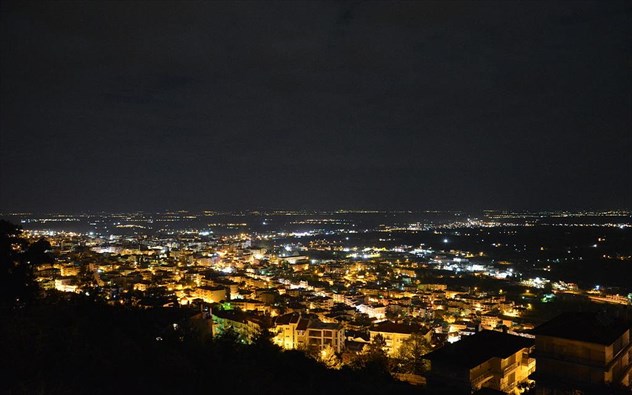photos www.clickatlife.gr
At the foot of the Vermio Mountains, with its fir trees, chestnuts, pines, beeches and yews, unfolds Veroia, one of the oldest Greek cities, mentioned even by Thucydides in the classical era.
There is no clear explanation where the name of the city came from. One option is that comes from the phrase "Ferrin Rojas" (produces pomegranates), something that actually applies to the area. The Turks called the city Karaferye, which means Black Veroia and probably comes from the mist, which dominates the city in winter.
Veroia has about 45,000 inhabitants. The city is often visited by people living in Northern Greece, mainly from Thessaloniki, which is only 70 km away. The distance to Athens is 510 km, which makes Veroia a longish journey for Athenians. Nevertheless, the place offers many things to see or experience: various attractions, historical monuments, traditional architecture in the old neighborhoods and plenty of churches from the Byzantine and post-Byzantine periods.
A stroll through Veroia’s heart
Starting from traditional neighborhoods, the most prominent ones surviving today are the Jewish and the Christian quarters – out of the 16 the city had in the mid 19th century. The Jewish one is called Barbouta, and is located in the northwest, near the river Tripotamos. It has a distinct character and architecture, and has existed since the year 50 AD. The stone synagogue is there, and the religious mikvah bath is right behind it.
The Christian neighborhood of Kiriotissa, with its stone churches and cobbled streets, transports its visitors to another era. The neighborhood retains its atmosphere through a large number of restored houses.
A walk in Orologiou Square, where the two-storey building of the court stands, should also feature in your list. Behind the court, you can see the town’s defence tower and reach Barbouta along the ‘the path of queen Vergina’.
For nature lovers, Elia park in the city centre can offer a relaxed walk, with another park, Agioi Anargyroi, right next to it.

In town you'll find a monument of interest to religious tourists – the "Step" of Apostle Paul, where in June a religious and cultural festival is organised, named "Pavlia".
An interesting archaeological site is Saint Potapi, which was the centre of anceint and early Christian Veroia. Visit at least some of the 48 preserved Byzantine churches, starting with the Resurrection of Christ the Savior, John the Evangelist, St. Peter and Paul, etc.
There are also mosques, such asChounkiar dzami, Kazaktsi, Horta dzami etc. – to be found among the churches as many of the latter were converted into Muslim prayer houses after Veroia was conquered by the Turks in the 15th century.

The Byzantine Museum will take you back to Veroia during the Byzantine period, and the recently renovated Archaeological Museum has exhibits from the Paleolithic all the way to the Ottoman period.
Do not leave without indulging your taste buds
Veroia is well-known for its syruped cakes (revani) and fried syruped pastries (loukoumades). They will treat you to them after some dinner in a restaurant, or you can buy from the cakeshops.
Veroia’s cuisine is quite admirable. Traditional pies are filled with leeks, cheese or batzo (semi-hard cheese in brine); there are meat specialties such as barbouria (meatballs), pork with celery and more. Try the king of local dishes, oven-roasted beans.
Outside Veroia

You can easily visit Vergina, about 13 km southeast of Veroia, and see the tomb of Philip II of Macedon. The underground museum exhibits the tombs of the Macedonian kings and abundant artefacts from the history of ancient Macedon.
Snow lovers can visit the Seli National Ski Centre, about 25 km from Veroia, in the village of Kato Vermio. This is the first organized ski resort in Greece.
If you visit Veroia in July, don’t miss the Aliakmonas river festival. Concerts of prominent musicians, sports events, and camping are all part of what has been described as the ultimate summer festival, the most musical, breeziest and enjoyable four-day party on the banks of the Aliakmonas.